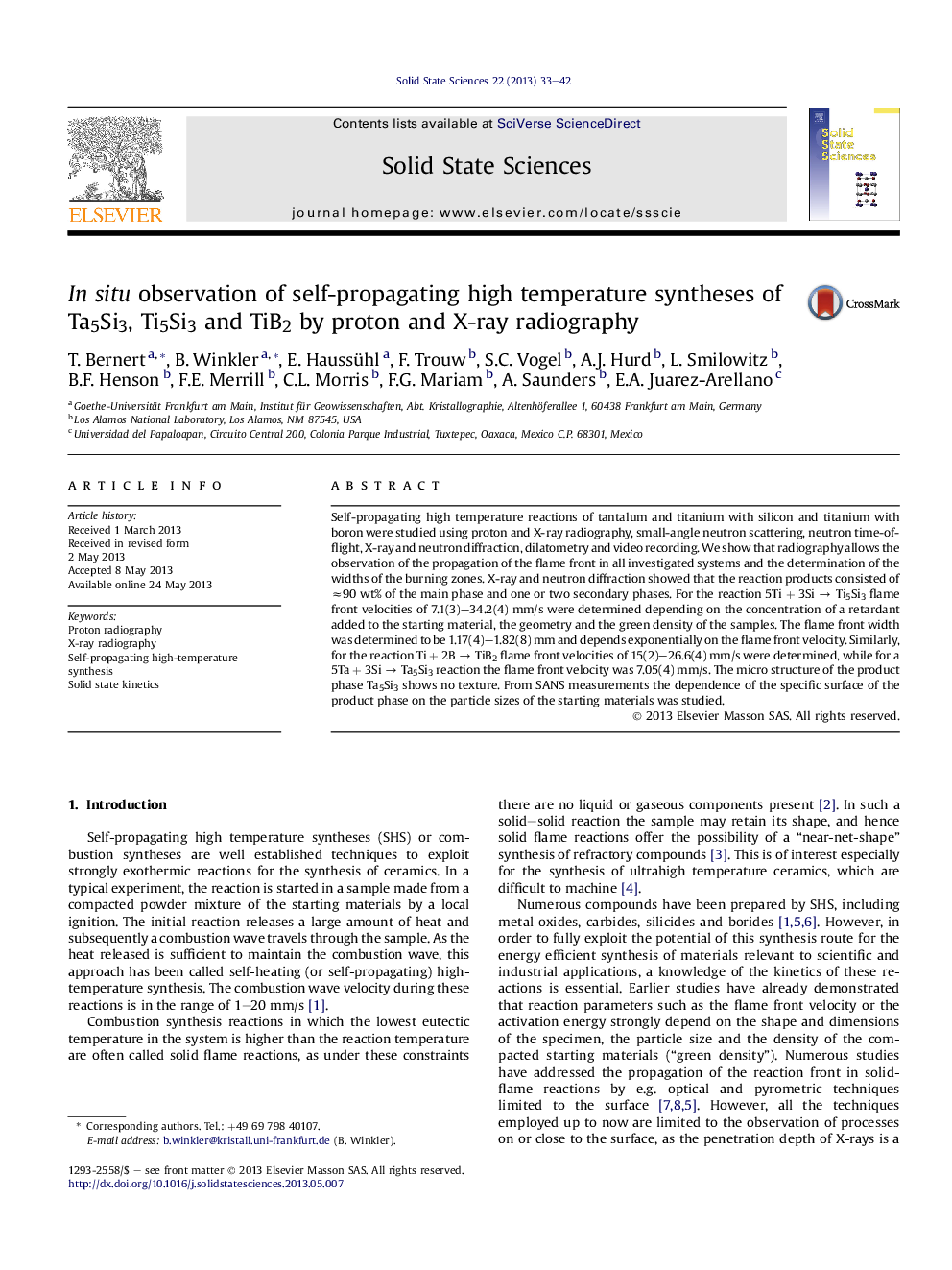| Article ID | Journal | Published Year | Pages | File Type |
|---|---|---|---|---|
| 1504666 | Solid State Sciences | 2013 | 10 Pages |
•Proton radiography has been employed to study solid state reactions.•Neutron diffraction shows no preferred orientation of SHS samples.•Exponential relation between velocity and dilution of sample with retardant.
Self-propagating high temperature reactions of tantalum and titanium with silicon and titanium with boron were studied using proton and X-ray radiography, small-angle neutron scattering, neutron time-of-flight, X-ray and neutron diffraction, dilatometry and video recording. We show that radiography allows the observation of the propagation of the flame front in all investigated systems and the determination of the widths of the burning zones. X-ray and neutron diffraction showed that the reaction products consisted of ≈90 wt% of the main phase and one or two secondary phases. For the reaction 5Ti + 3Si → Ti5Si3 flame front velocities of 7.1(3)–34.2(4) mm/s were determined depending on the concentration of a retardant added to the starting material, the geometry and the green density of the samples. The flame front width was determined to be 1.17(4)–1.82(8) mm and depends exponentially on the flame front velocity. Similarly, for the reaction Ti + 2B → TiB2 flame front velocities of 15(2)–26.6(4) mm/s were determined, while for a 5Ta + 3Si → Ta5Si3 reaction the flame front velocity was 7.05(4) mm/s. The micro structure of the product phase Ta5Si3 shows no texture. From SANS measurements the dependence of the specific surface of the product phase on the particle sizes of the starting materials was studied.
Graphical abstractFigure optionsDownload full-size imageDownload as PowerPoint slide
